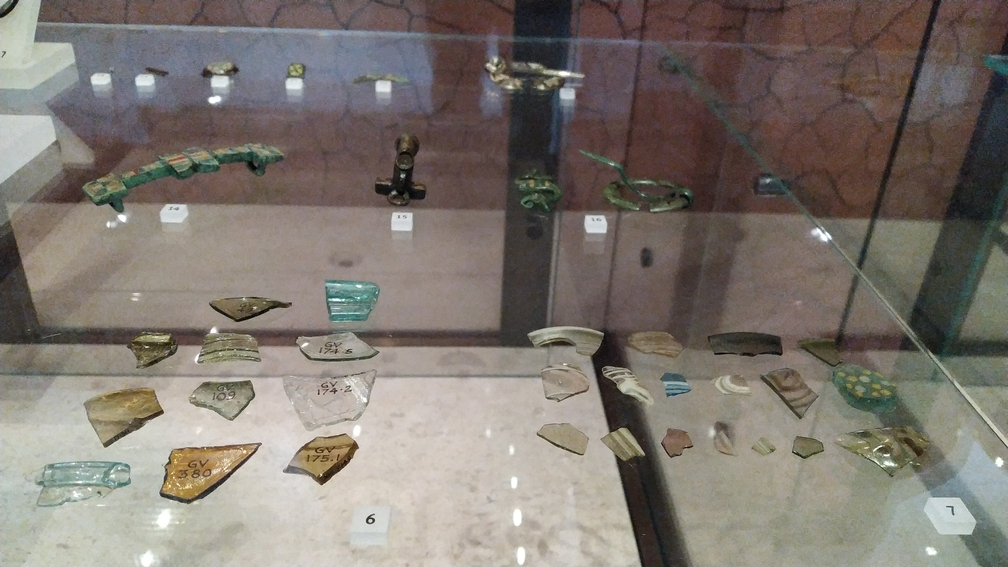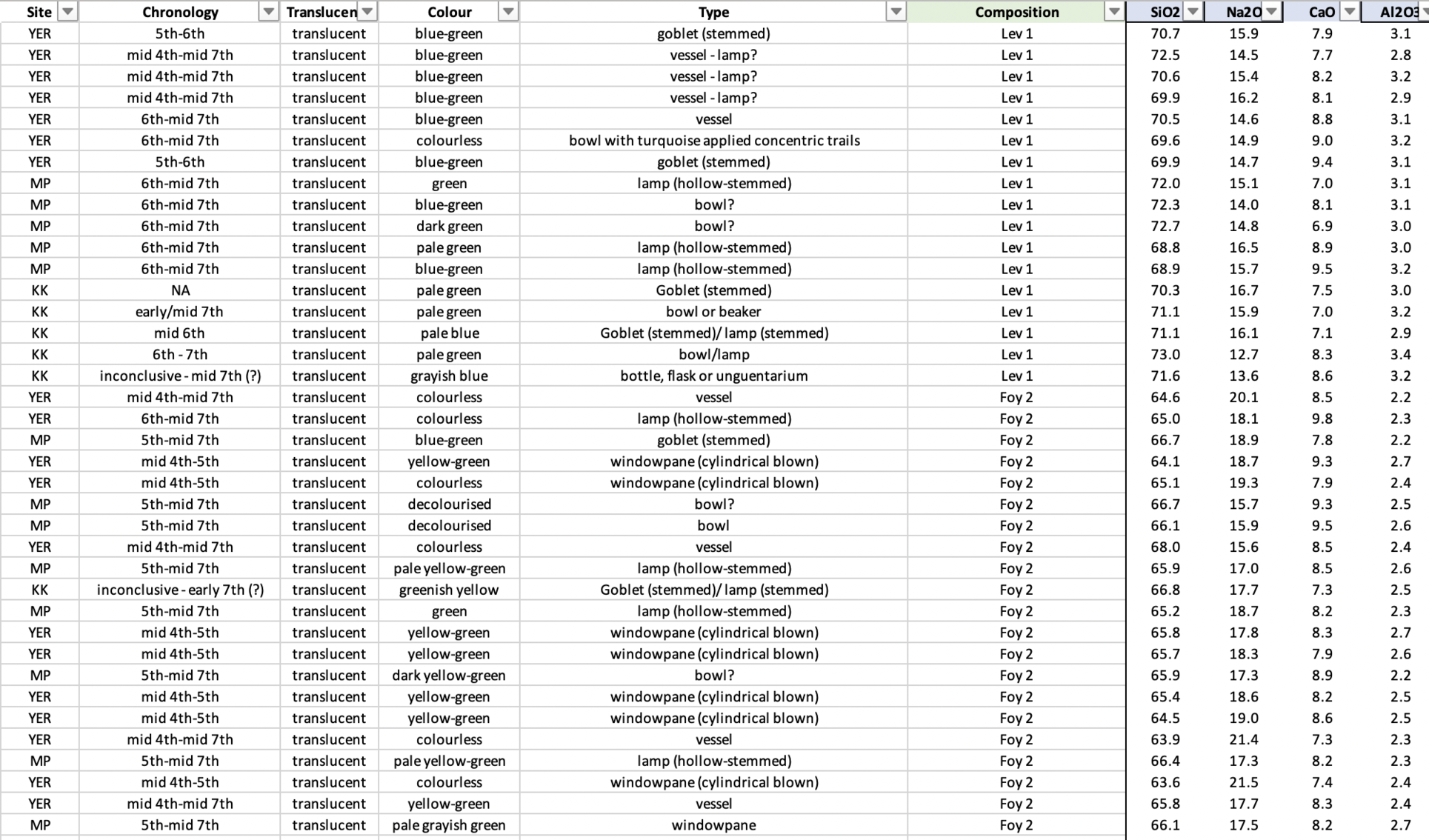THE CONTEXT OF THE ARCHEOLOGICAL DATA USED
To provide material for beginning experiments to sonify antique glass data, Dr. Bertini selected a dataset from a well-known paper in the field (Ceglia,2017). Bertini’s research at Newcastle and Harvard Universities specifically concerns the chemical composition of ancient glass. In this work, chemical analysis is used to characterise the glass chemical compositions (major, minor, and trace elements) in order to suggest a primary production area for the glass from raw materials. The abundance of certain trace elements (>100ppm) can be used as "marker" of recycling processes in translucent faintly coloured glass samples.
The dataset is organised according to historical and perceptual attributes of the specimens (Site, Chronology, Translucence, Colour, (vessel) Type, and Composition resulting from detailed chemical analysis (LA-ICP-MS).
Each glass specimen studied corresponds to one line in the data set, which is broken down into the molecular components, as well as perceptual attributes (e.g. Translucency, Colour, Type) and details of provenance (e.g. Chronology, Composition).
It is worthwhile noting that as interdisciplinary work, our working process raised critical issues for discussions of archaeological glass data in addition to the broader issues discussed elsewhere in this paper. An ongoing issue in this field is that the nomenclature for certain qualitative categories of data is inconsistent, even within the same dataset. In this case, examples include the parameters for colour, and type of vessel that a sample is believed likely to have been derived from. The result of this is that a further level of abstraction was necessary for me to interpret these in the sound domain. It is notable that longstanding issues in one domain are at times highlighted when fields are brought into interaction or an attempt is made to render the data perceptible to a wider audience.
An image of antique glass fragments from the National Museum in Scotland. While these do not correspond to the actual glass fragments studied in Ceglia, 2017 or other studies we are using, they give an image of what some of the larger ancient glass fragments found in the UK and in Europe look like.


